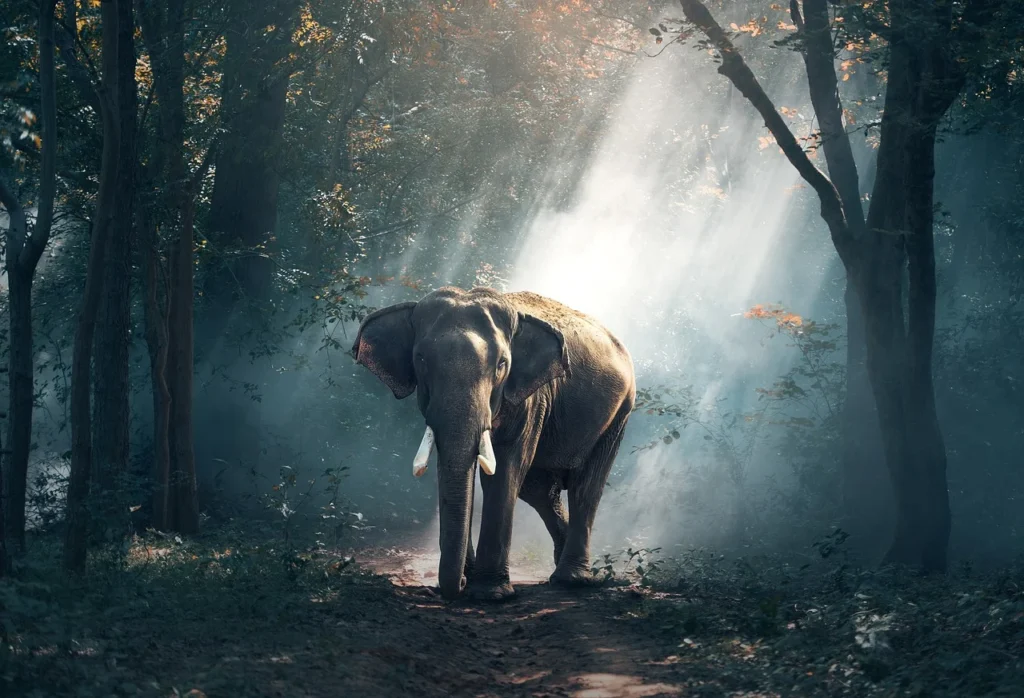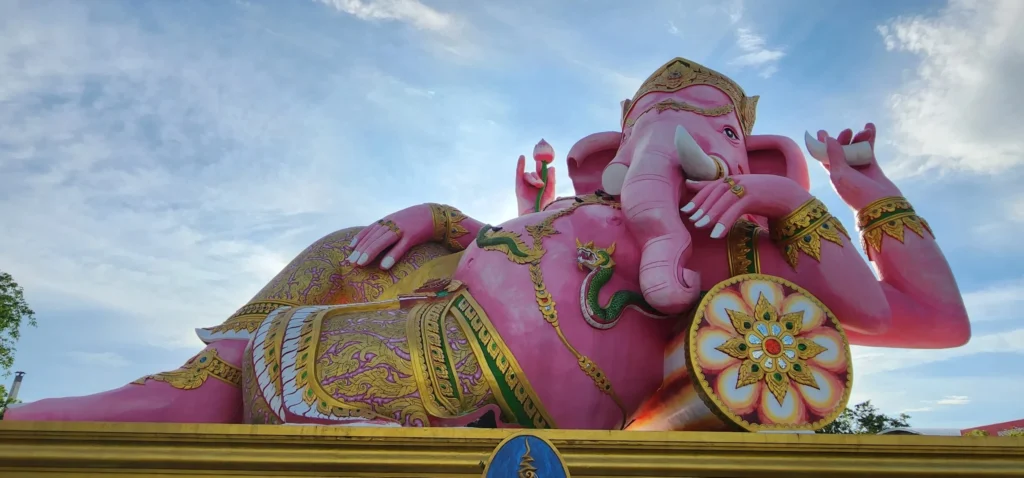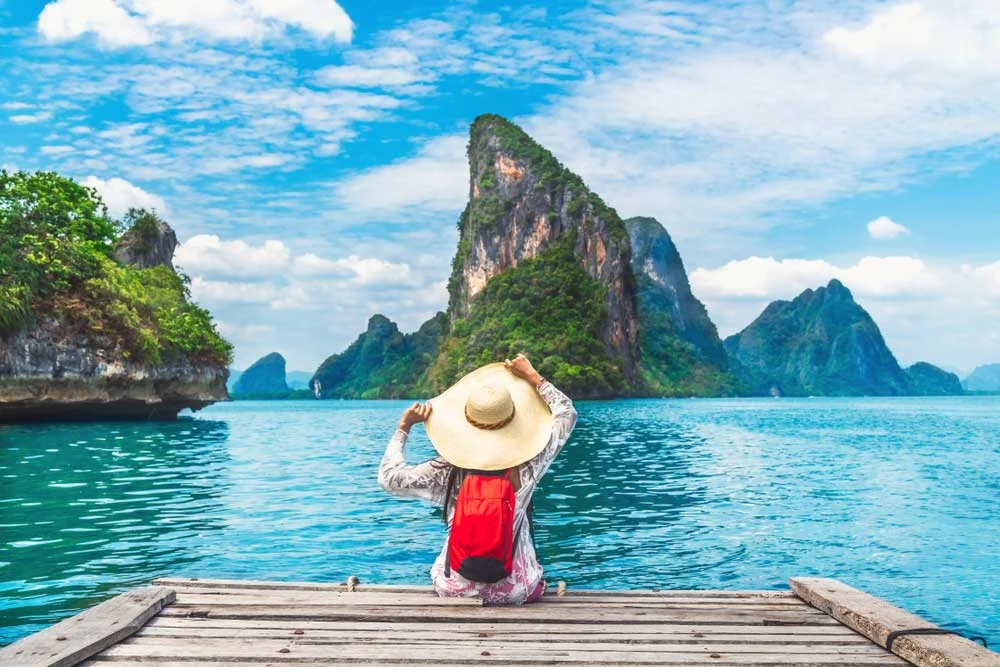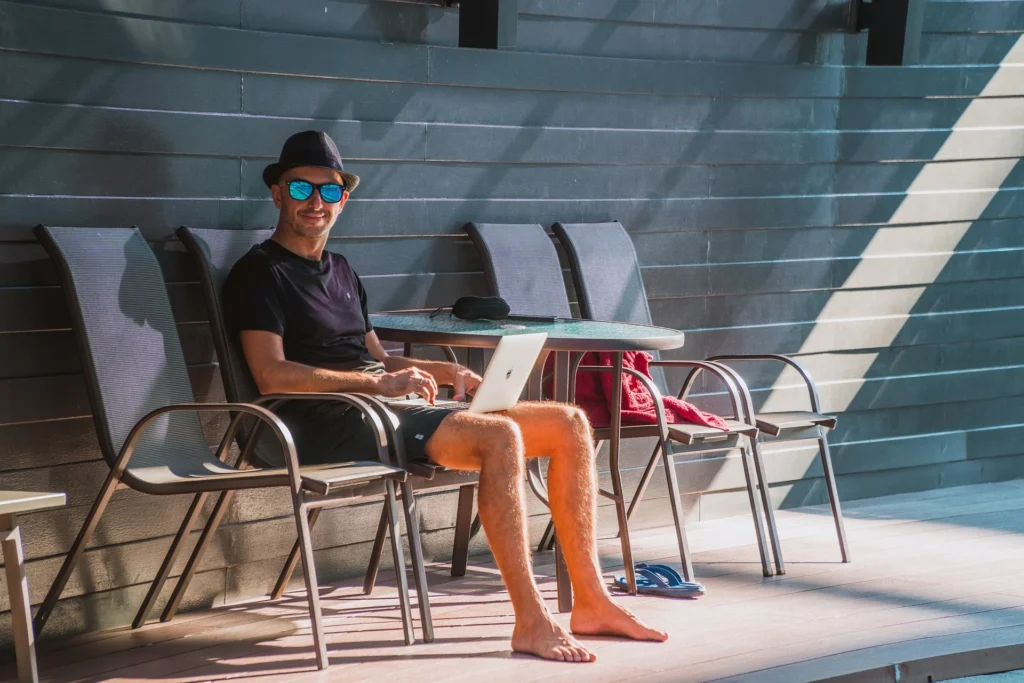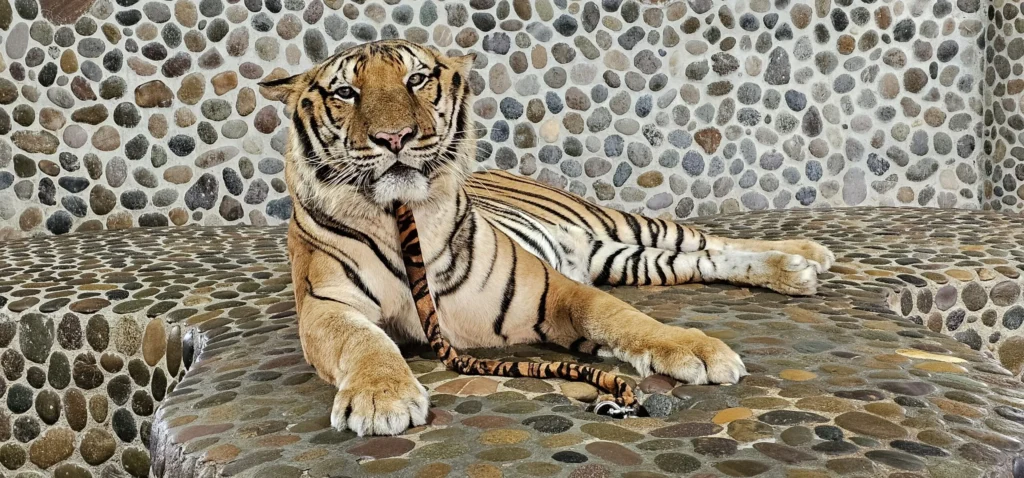Thailand is a land of wonders. With its vibrant cities, serene beaches, and rich culture, it offers something for everyone. Let’s dive into some of the best Thailand Attractions, making your trip unforgettable.
Best Thailand Attractions
Robot building (Bangkok)
The toy robot that his son had given him served as inspiration for the building’s Thai architect. United Overseas Bank (UOB) presently resides in the building that was initially built for the Bank of Asia. This structure was the tallest in the Sathorn region when construction was finished in the middle of the 1980s. Even though it appears to be getting smaller in comparison to other Bangkok high-rise buildings, its unique style nevertheless stands out.

Wat Mahathat, which originates to the fourteenth century, was demolished in 1767 when Burmese forces seized control of Ayutthaya, the former Siamese capital. The attackers beheaded many of the Buddha statues. According to one theory, a tree just naturally sprouted in the vicinity of the stone Buddha. According to a different theory, the stone head was left there by would-be thieves (perhaps in the early 1900s). Whatever the actual circumstances, it is a remarkable sight that you should search for if you go to Ayutthaya.
Cabbages & Condoms restaurant (Bangkok)
The eatery has a serious message behind it despite its sanuk nature. Mechai Viravaidya came up with the idea for Cabbages & Condoms in order to advance a greater knowledge of family planning and responsible sex. The eatery boldly advertises that “Our food is guaranteed not to cause pregnancy” and contributes to the PDA (Population and Community Development Association). The restaurant’s catchy name was inspired by Mechai’s remark that condoms need to be as accessible and ubiquitous as cabbages.
Bua Tong sticky waterfall (Chiang Mai)

Add Your Heading Text Here
Namtok Bua Tong, an hour’s drive northeast of Chiang Mai, isn’t a usual waterfall. The limestone rocks may be climbed because of the mineral deposits on them, which provide them some traction. It still takes some effort to walk up the waterfall, and you will be glad that there are ropes to assist you, but you don’t have the chance to climb up a waterfall every day.
Jungle Bubbles at Anantara Golden Triangle Elephant Camp & Resort (Chiang Rai)
Stay at the unique Jungle Bubbles at Anantara Golden Triangle Elephant Camp & Resort in the Chiang Rai countryside for accommodation which is different. Spend a memorable night watching elephants in their natural environment. Amazing views of the surroundings and the local elephants are offered by the clear Jungle Bubbles. Furthermore, you enjoy excellent views of the starry sky at night.
Elephant Poo Poo Paper Park
Did you know that elephant dung can be used to manufacture paper? To find out more about the procedure, go to Chiang Mai’s appropriately called Elephant Poo Poo Paper Park. from gathering the waste products, washing it, and then allowing the fibers to dry in the sun. Visitors may try their hand at producing the paper at this eco-friendly attraction in Chiang Mai, which makes it helpful as well as a lot of fun for the whole family. Products made from Elephant Poo Poo Paper can be purchased in the park, online, or at a number of other stores across Chiang Mai, such as One Nimman and Central Festival.
World Cup rock and ‘Thailand’s Stonehenge’ (Chaiyaphum)
The unusual rock formations of Pa Hin Ngam in Chaiyaphum were shaped by wind and soil erosion. Mor Hin Khao, another impressive natural rock formation, is located in this Isaan province. Mor Hin Khao, also referred to as “Thailand’s Stonehenge,” is located a few hours’ drive from Pa Hin Ngam. If you still can’t get enough of these peculiar rocks, head to Bueng Kan in another Isaan region and take in the view from Hin Sam Wan (Three Whales Rock).
Wooden bridge at Sangkhlaburi (Kanchanaburi)
Among the many Thailand attractions, the wooden bridge at Sangkhlaburi in Kanchanaburi stands out. it is Thailand’s longest wooden bridge. Uttamanusorn Bridge is the official name, while Saphan Mon is more often used in Thailand. The bridge, which is more than 400 meters long, connects the Mon population in the hamlet at one end of the bridge with the Thai and Karen communities in the major town of Sangkhlaburi at the other. Locals assemble on the bridge every morning to create merit and distribute alms to the monks.
Buddha mountain (Chonburi)
A magnificent Buddha statue that is 130 meters tall is set against the Khao Chi Chan mountain. In 1995, in honor of King Rama IX’s Golden Jubilee the following year, the golden shape of the Buddha was laser engraved into the rock. The Supreme Patriarch, the most senior Buddhist monk in Thailand, was the project’s driving force.
Dinning on Treetop (Ko Kood)
Guests at the luxurious Soneva Kiri may enjoy eating among the trees thanks to the resort’s amazing bamboo pods. Specially trained waiters use a zipline to deliver the food as you take in the panoramic view from the tree canopy. For routine maintenance and security purposes, the treetop pods are closed at specific periods of the year. If you are thinking of visiting, kindly inquire directly with the resort.
Huge toad (Yasothon)
The enormous toad monument in Yasothon was erected in 2015 as a tribute to regional mythology and the tale of the toad prince, Phraya Kankak. In the tale, the toad prince fights and kills the rain god, saving the local populace in the process. In exchange, it was decided that mankind would launch rockets into the sky to signal the rain god when it was time for rain. The yearly Rocket Festivals, which are held all throughout North and North-East Thailand, are also based on this same legend. Inside the enormous toad are a museum and viewing deck. In addition to the Phraya Kankak mythology, a learning center promotes the value of toads to the environment, which supports locally grown goods like watermelons and rice. Keep a watch out for the large naga statue that is nearby if you visit Yasothon.
Mae Klong Railway Market (Samut Songkhram)
This magnificent market is the embodiment of Thailand in many ways. Thailand is not simply a nation of traders and businesspeople; it is also a place where ingenuity and a “mai pen rai” mentality may solve many issues. When officials made the decision to construct a railway line here, Mae Klong Market was already operational. But rather than leaving, the suppliers cleverly adjusted. They raise their umbrellas and canopies as the train draws near before continuing as usual when it has past. The Thai name for Mae Klong Railway Market is “Talad Rom Hoop,” which alludes to the way the umbrellas rise and fall as the trains pass. About 45 miles southwest of Bangkok, in the province of Samut Songkhram, is where the market is situated.
Beer bottle temple (Sisaket)
Wat Pa Maha Chedi Kaeo is the official name of this amazing temple in Si Saket, North-East Thailand. Its common name, Wat Larn Kuad (literally, “million bottle temple”), is used instead. More than a million recycled bottles, the most of which were green or brown beer bottles, were utilized to adorn the temple structures. Even the bottle tops themselves have been reused to make mosaics. The main temple edifice, which is built on a concrete frame, was finished by monks at the Isaan temple in two years after they started collecting the bottles in the 1980s. Since then, the temple complex has grown, and bottle contributions have made it possible to finish additional buildings including prayer halls, a cremation, and restrooms.
Sanctuary of Truth (Pattaya)
The Sanctuary of Truth, another notable among Thailand attractions, stands as a hybrid gallery, temple, and museum, conceived by a wealthy Thai billionaire. Additionally, it serves as a workshop, with ongoing construction on this immense wooden structure. The Sanctuary of Truth was fashioned from wood using traditional methods and hugs the shoreline in North Pattaya. Work started in 1981 and is anticipated to go for a while longer. Lek Viriyaphant, a Thai man who designed the structure, passed away in 2000. His other cultural initiatives in Thailand include the Erawan Museum (see below) and the Ancient City (close to Bangkok).
The Monkey temple (Lopburi)
The city of Lopburi, which is around 90 miles north of Bangkok, is an interesting site to explore because of the historic Khmer temple ruins there. The most well-known temple ruin is Prang Sam Yod, and hundreds of monkeys utilize it as a launching point to explore the area. Tourists find it to be an amazing sight, but locals seem to accept it without saying anything. The cause is that people have invaded macaque habitat. The monkey population first migrated here and occupied the region around Prang Sam Yod thousands of years ago, when the area was covered in forest.
Penis Shrine at Phra Nang Cave (Krabi)
First-time foreign tourists to Phra Nang Cave might be shocked to witness a “penis shrine.” Although the lingams used as phallic symbols may seem humorous to Western eyes, this is a holy location, and visitors should regard it as such. The Princess Goddess Phra Nang supposedly lives in the cave close to Railay Beach. Many different tales have been credited to Phra Nang. Offerings to her include the carved wooden lingams, which are symbolic of fertility and vitality. Fishermen from the area still gather here to honor Phra Nang and pray for a safe voyage at sea.
Phi Ta Khon Ghost Museum (Loei)
The vibrant Phi Ta Khon Ghost Festival is held every year in Loei’s Dan Sai neighborhood. Although the precise dates aren’t known until closer to the event, it typically takes place around June. The Phi Ta Khon Ghost Museum is the greatest alternative if you can’t make it to Loei for the festival itself. The Ghost Festival’s intricately adorned masks and costumes are on display in the museum, which is situated on the grounds of Wat Phon Chai.

